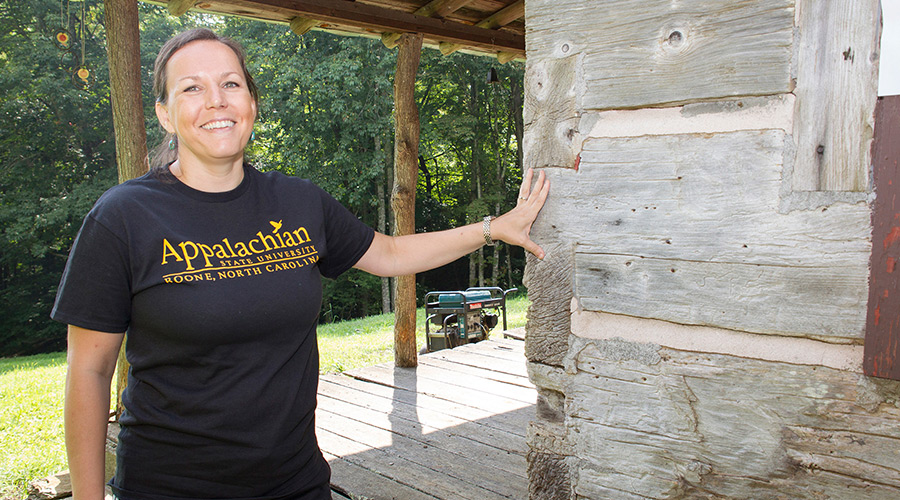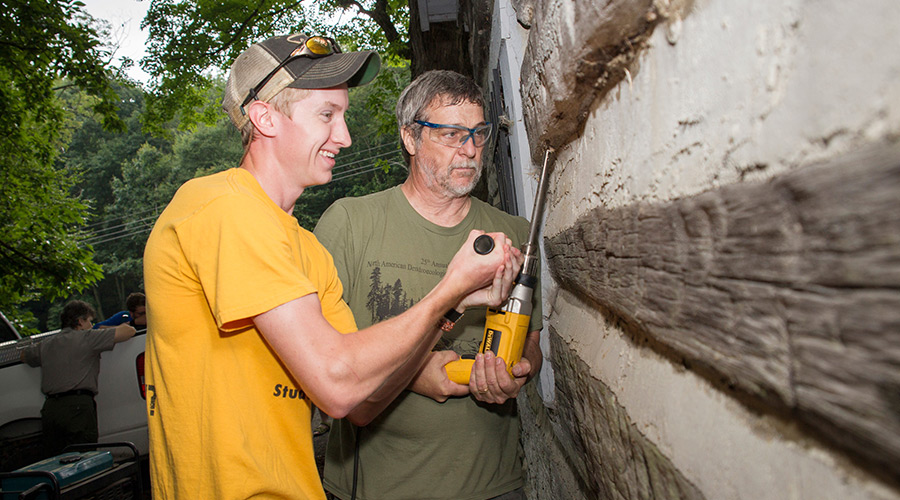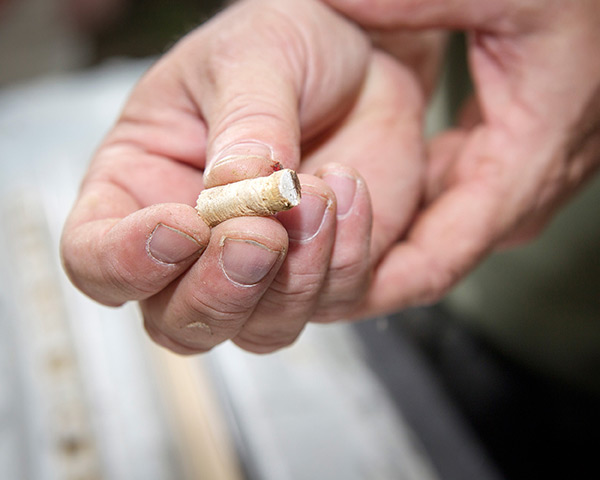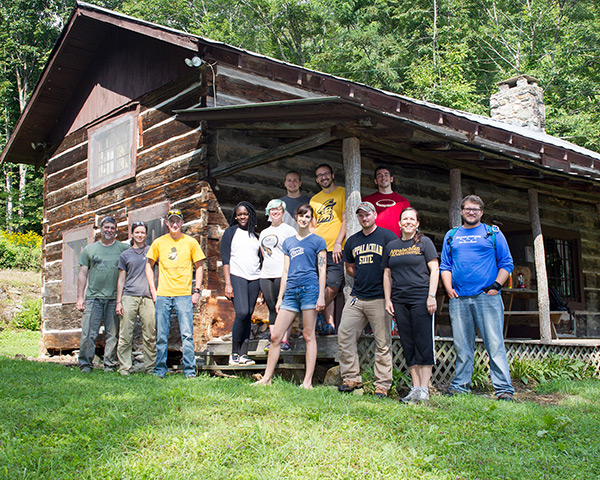
Saskia van de Gevel is part of a research team determining the age of logs used to construct cabins located at the Bear Paw State Natural Area in Watauga County. Van de Gevel is an assistant professor in the Department of Geography and Planning at Appalachian State University. (Photo by Marie Freeman)
BOONE—Saskia van de Gevel looks closely at the ends of logs used to construct two cabins located in the Bear Paw State Natural Area in Watauga County.
The logs’ coloration and wood anatomy indicates which ones are original to the structure and which ones were replaced because of damage. The closeness of the tree rings visible along the edge of the logs also is an indication of age.
Van de Gevel is an assistant professor in the Department of Geography and Planning at Appalachian State University who specializes in tree ring and biogeographical research.
Van de Gevel, along with Professor Henri Grissino-Mayer from the University of Tennessee, Ph.D. student Maegen Rochner, also from the University of Tennessee, Neva Specht, an associate dean in Appalachian’s College of Arts and Sciences, and Mark Spond, Appalachian’s liason to the Blue Ridge Parkway, are the lead researchers on a project to determine the age of logs used to construct the cabins that were moved to their current site from another location in Watauga County.
“We know the larger cabin was relocated here in the early 20th century,” said Grissino-Mayer. But the cabins are much older than that. In addition to the logs’ color and tree rings, nails used in their construction indicate when they were constructed.
“Square cut nails were used between 1800 to about 1860. The round nails that we are used to today came into use about 1860s or 1870s,” Grissino-Mayer. “Whenever you see these square nails, that’s a dead clue that the log is original to the building.”
The cabins being studied have both types of nails.
The researchers and their students took core samples from the top and bottom of the logs in July to more accurately determine the construction dates of the cabins.
“The project will advise the state park system on how to proceed with the preservation of the cabins. The intent of the state park system is to utilize the larger cabin as an educational center that focuses on interpreting Southern Appalachian culture and history,” said Tracy Minton, park superintendent of Elk Knob State Park. Bear Paw is a satellite park of Elk Knob State Park.
Their work also will be used to evaluate whether the cabins are eligible for National Register of Historic Places designation.
“Hopefully, we will be able to determine if the cabins were built pre- or post-Civil War,” van de Gevel said. “That will help with plans to include the cabins on the National Register.”
Matthew Bray, who graduated in May with a master’s degree in public history, researched and wrote a history of the site. According to oral history, the largest cabin on the site was relocated and reassembled in the early 1900s, most likely from a farm located near Clark’s Creek Baptist Church. It was used in the 1960s to the 1980s as rental property, according to Bray’s report. It is unknown when the smaller cabin was relocated, but it was originally an agricultural outbuilding located in the valley in the Clark’s Creek area, according to interviews conducted in 2014 by the director of the university’s Center for Appalachian Studies with relatives of the original owners.
Undergraduates in van de Gevel’s summer class titled “Global Change of the Biosphere” assisted with fieldwork related to the project.
Funding for the field work was provided by Appalachian’s College of Arts and Sciences.
About Appalachian State University
As a premier public institution, Appalachian State University prepares students to lead purposeful lives. App State is one of 17 campuses in the University of North Carolina System, with a national reputation for innovative teaching and opening access to a high-quality, cost-effective education. The university enrolls more than 21,000 students, has a low student-to-faculty ratio and offers more than 150 undergraduate and 80 graduate majors at its Boone and Hickory campuses and through App State Online. Learn more at https://www.appstate.edu.
What do you think?
Share your feedback on this story.














